Japan is a country with a proud tradition of metalworking. This is reflected by Samurai swords that feature throughout Japanese history and are well-known worldwide to this day. Swords are not the only tools that Japan is famous for. For a time, such weapons were banned in Japan. This forced many craftsmen to shift their focus to creating everyday tools instead.
Consequently, many Japanese knife styles are available with brilliantly engineered designs for different applications. General use knives include the Gyuto and Santoku varieties. These closely resemble their Western chef counterparts.
There are also more specialized knives such as the Pankiri for cutting bread, the Takohiki for slicing fish, and the Honesuki for boning.
A lot more styles exist too. There are many high-quality Japanese knives but they all differ in feel, appearance, and functionality. If you are considering buying a Japanese knife, it is important to fully understand the design and uses of each model to find the best choice for you.
This article will cover the history of Japanese knives plus the main varieties in use today. Let’s dive into all about Japanese knife styles.
Table of contents
An introduction to Japanese knives
History
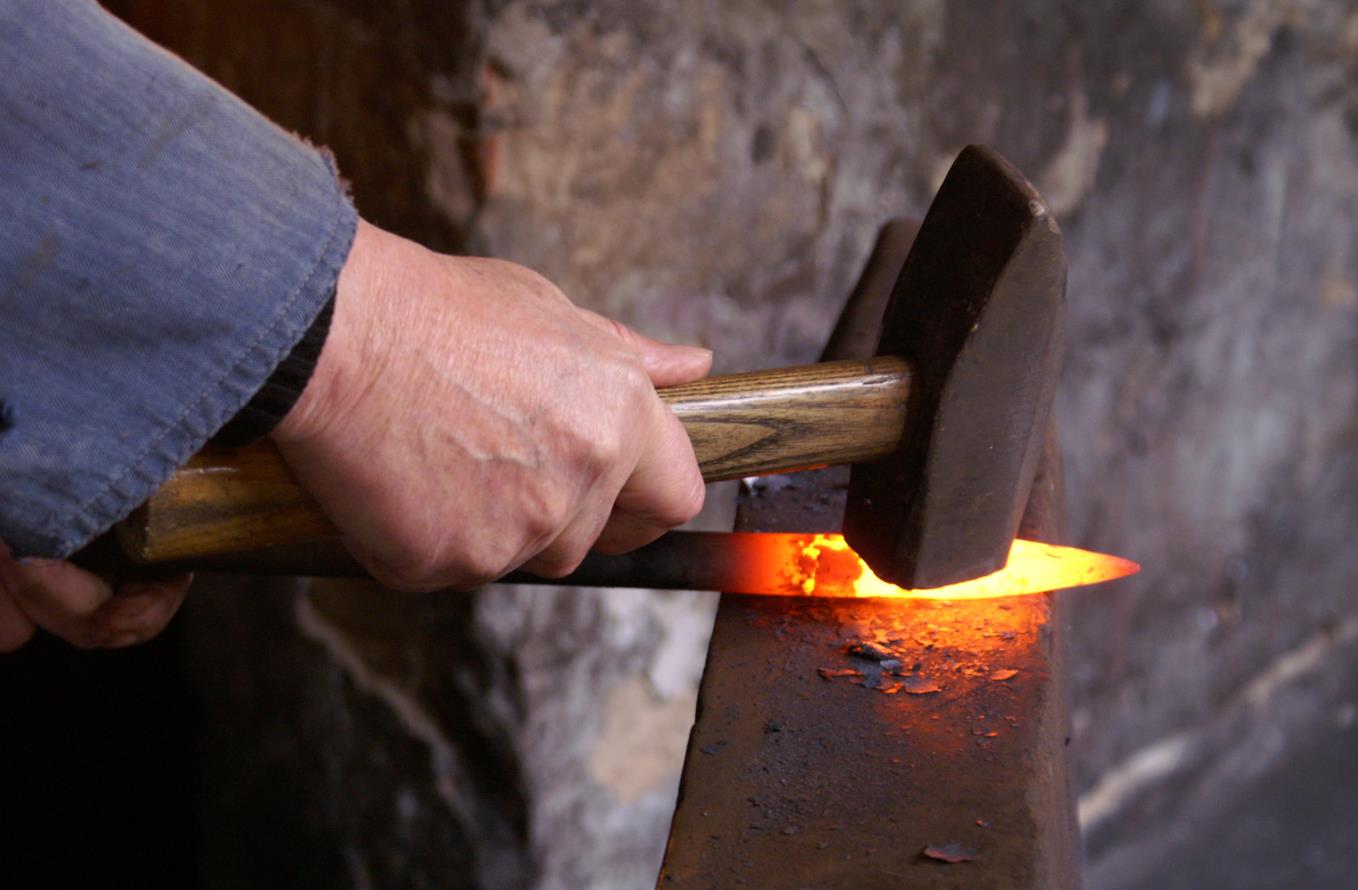
The oldest existing Japanese knife dates back to the 8th century and is currently stored in a museum. During the Heian period between the 9th and 12th centuries, the significance of knives grew in Japanese society. A special ceremony called “Hocho Shiki” was born, and it involved the meticulous preparation of meat and fish. It emphasized the need for good-quality, sharp blades and supreme cooking skills.
This ceremony still exists and has greatly affected Japanese cuisine and knives. After the Heian period, Samurai established themselves as formidable military officers across the nation. They were allowed to carry swords manufactured by expert blacksmiths. The Samurai continued to have a strong presence in Japan until the mid-19th century.
Tobacco became popular in the 16th century in Japan which increased the demand for sharp knives that could cultivate the crops. This led to the production of very sharp single-beveled knives. The 17th century was a quiet time for Japan. The country was not involved in much domestic or international fighting and so citizens focused more on cooking and farming. Hence, the need for knives overtook the need for swords.
While plenty of Japanese swords have lasted until the present day, most household knives have not. Swords were used infrequently, so they could be passed on to future generations undamaged. Old kitchen knives wore out due to frequent use, so we only know about their existence from texts and drawings.
The Meiji era (beginning in 1868) outlawed public ownership of weapons, including swords. This left many sword makers out of business. To continue earning an income, craftsmen had to apply their extensive knowledge of sword manufacture to kitchen knives and household tools.
The above helps to explain the intimate link between centuries-old Samurai swords and Japanese kitchen knives that are massively popular in the modern world. Outstanding craftsmanship that was honed over generations is now available for your home cooking.
What is the difference between Japanese and western knives?
Both Japanese and Western knife selections are versatile and offer tools to tackle virtually every task in the kitchen. In general, you can distinguish between Japanese and Western styles in three main ways: material, shape, and bevel.
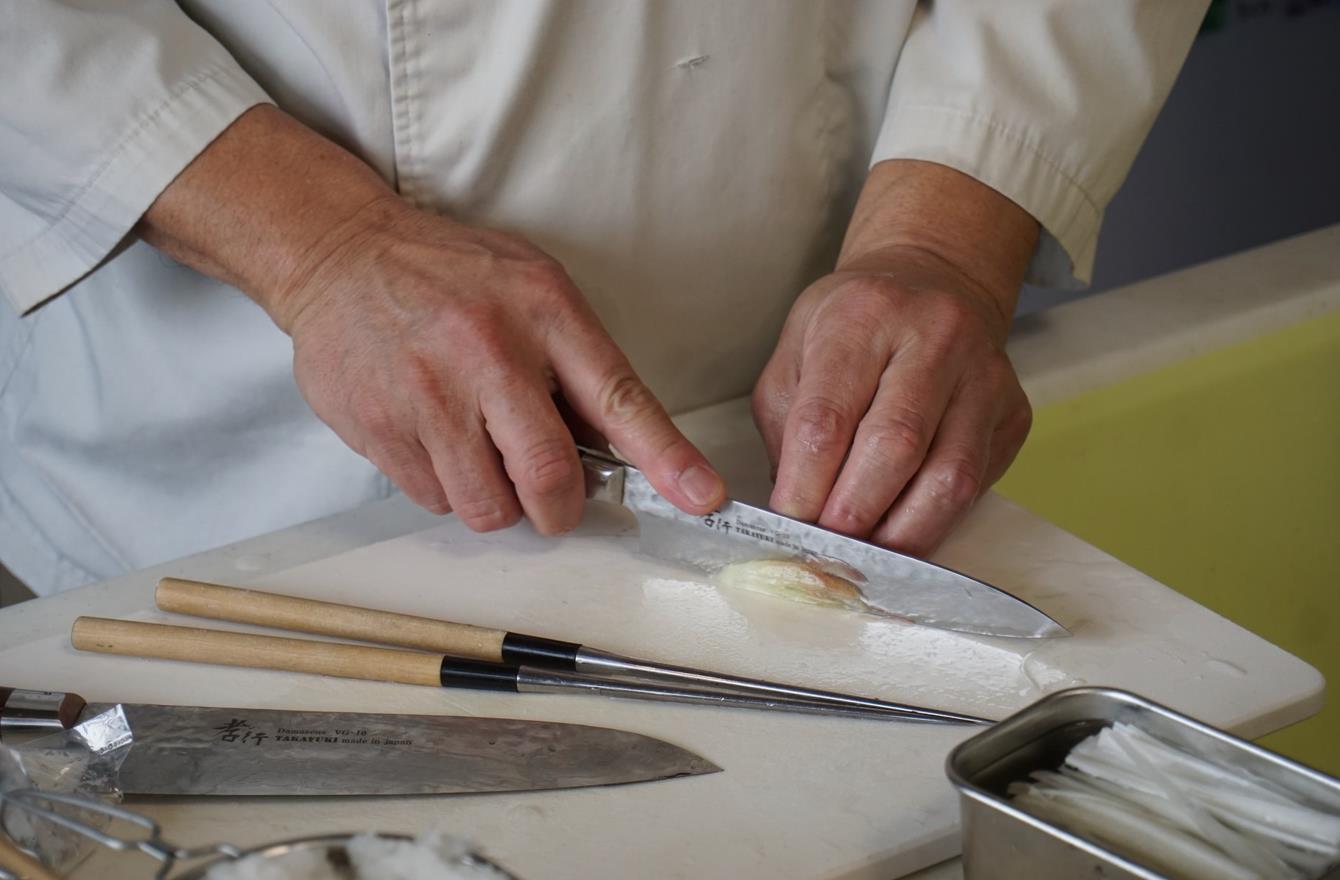
Material
Original Japanese knives were made using high-carbon steel. This is a very hard material that is also somewhat brittle and prone to rusting. These material properties put traditional Japanese knives at risk of cracking or degrading from water damage. Hard carbon steel allows Japanese knives to be very thin and sharp, but the blades require a lot of maintenance.
Ceramics aside, Western knives are most often made from stainless steel which is softer than high carbon steel. Yet, it is more flexible and easier to keep in good condition. Sharpening is more straightforward, although these knives blunt more easily. Modern Japanese knives increasingly feature stainless steel and ceramic blades too, so chefs who like the Japanese designs have many material choices.
Shape
Although there are many styles of Japanese and Western knives, the standard Japanese Chef knives tend to have straighter cutting edges than Western Chef knives. This is most obvious when you compare a Santoku to a German Chef’s knife. The straighter edge of a Japanese kitchen knife requires a different cutting technique to Western versions.
The softer stainless steel used in Western knives means that the blades must be thicker than those of Japanese knives to have sufficient cutting strength.
Bevel
A major difference between traditional Japanese cooking knives and Western knives is the bevel. Traditional Japanese blade styles have a single bevel design so that the cutting edge is sharpened on only one side. These asymmetrical blades can be made considerably sharper ― by focusing on one side of the edge, you can achieve a smaller angle than with a double bevel.
Western kitchen knives always have a double bevel, but lots of modern Japanese knives do as well. Double bevel edges may not be as sharp as single bevels, but their symmetry allows both left- and right-handed cooks to use them with ease. They are also easier to sharpen because you do not have to achieve such precise angles on a double bevel.
General-purpose Japanese knives
Santoku
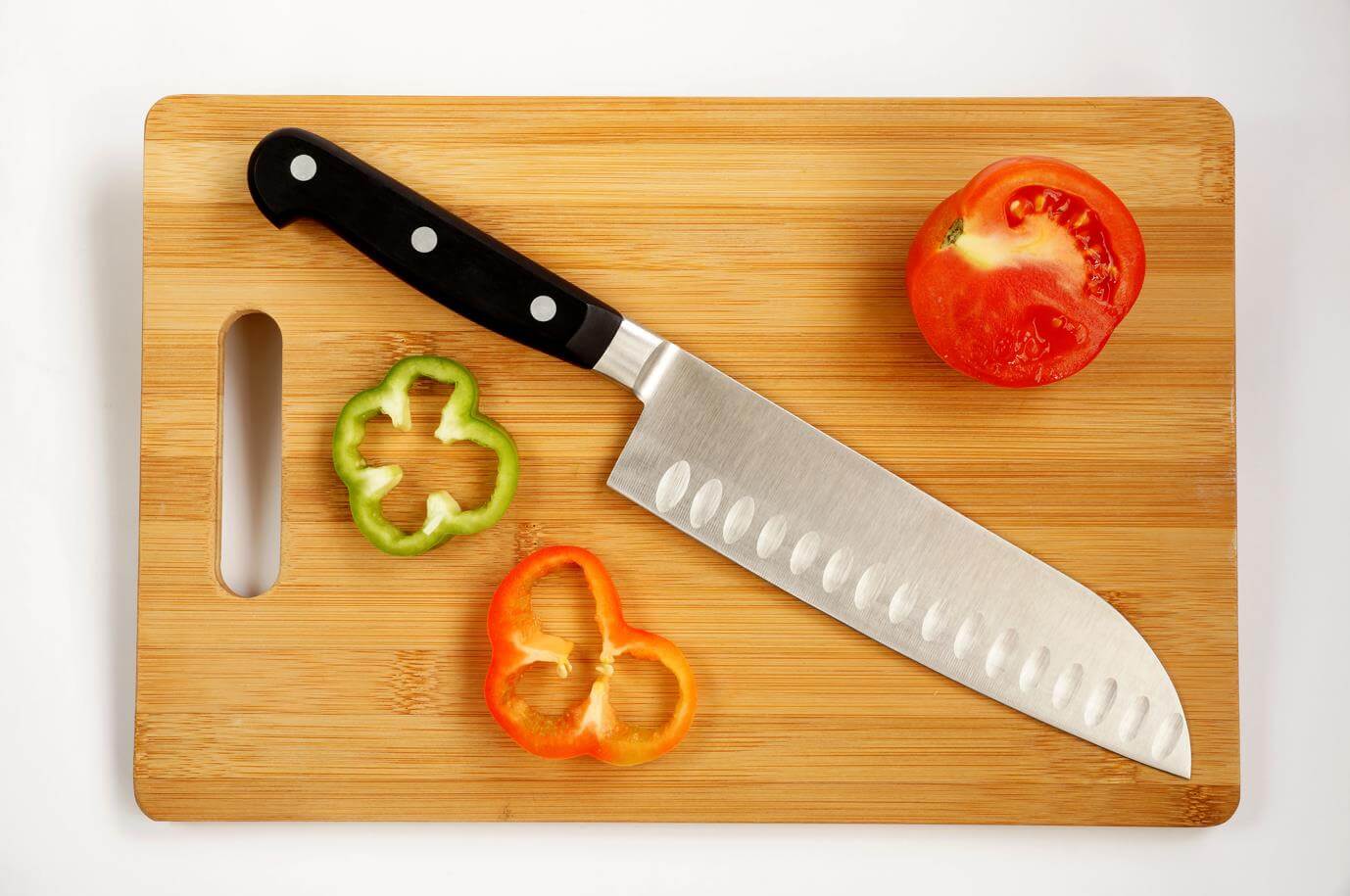
The Santoku is perhaps the most famous Japanese general-purpose knife used today. It is not only popular in Japan, but also in most foreign kitchens. The translation of Santoku is “Three Uses” which indicates the versatility of this knife ― you can use it to cut many ingredients. The full name is “Santoku Bocho”. Bocho means kitchen knife, so you will find this word at the end of all Japanese knife names.
This single Japanese knife can perform a range of tasks so well that it often replaces many more specialized knives in Japanese homes.
Santoku Knife Uses: Everything You Wanted to Know
It originates from the Meiji era in Japan (around the mid-19th century) when the country began to discover Western cooking. Hence, it is not dissimilar to Western Chef knives in appearance, though the Santoku’s cutting edge is a lot straighter. The nearly straight blade edge means that Santoku knives do not rock while chopping. Also, Santoku blades are shorter and ideal for small hands.
Santoku vs Chef Knife: How Are They Different?
Gyuto
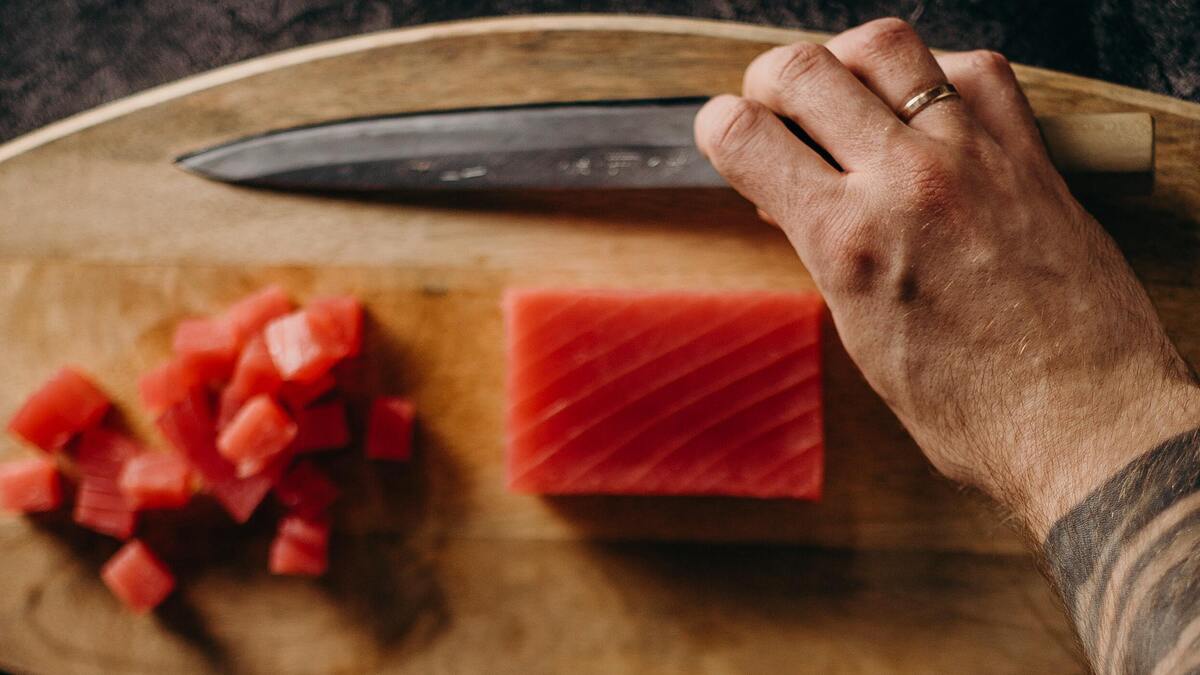
The Gyuto kitchen knife is the Japanese design most similar to European Chef knives, though it is still lighter and smaller. Gyuto translates to “Cow Knife”, and much like the Western design, its blade has a curved edge with a distinct tip. The tip is useful for finely chopping food and the curved edge enables a rocking motion when cutting.
Gyuto Knife: Ultimate Chef’s Knife That Does It All
Although the Gyuto is from Japan, its similarity to European Chef knives means it is not ideal for traditional Japanese cooking. Nevertheless, this is a well-rounded knife for most cuisines like the Santoku, albeit more pricey.
Gyuto vs. Santoku: Which One Is Right for You?
Chukabocho
Chukabocho resembles a lot with a Western meat cleaver. It’s was adopted by Japanese from the Chinese chef knife (Cai Dao). The primary difference separates Chukabocho from other all-purpose knives is the rectangle blade profile. It features a much wider and durable blade design that can withstand greater impact.
Chukabocho can be seen as an all-in-one solution in meal prep. Not only does it excel in fine slicing and chopping, it also performs well with dense foods. Its versatility in kitchen earns the knife a devoted crowd.
Everything on Chukabocho: Chinese Chef Knife
Bunka
Bunka means cultural in Japanese. The knife inherited the design of other Japanese all-purpose knives like Kiritsuke and Santoku, featuring a unique looking reverse tanto tip and a broad blade.
The pointed tip of bunka knife is good at slicing bread and slit open tricky ingredients. While the flat edge can be used as the primary cutting space for vegetable, meat, and fruit. Since the knife doesn’t have a curved belly, using it to ‘rock chop’ takes more effort and wrist strength than western knives.
The Bunka Knife: A Hidden Gem of the Japanese Kitchen
Kiritsuke
Kiritsuke knife is another great addition to our Japanese general-purpose knife catalog. The name can be translated to “slit open”, which spoils the strength this knife holds.
Kiritsuke combines two classic designs of Yanagiba and Gyuto, the reverse tanto tip and flat blade makes the knife a bit challenging to use. But with a bit of practice, this knife is perfect for delicately slicing seafood, or skinning bones.
Kiritsuke vs Santoku vs Chef Knife: An In-Depth Review
Japanese fish and sushi knives
Deba
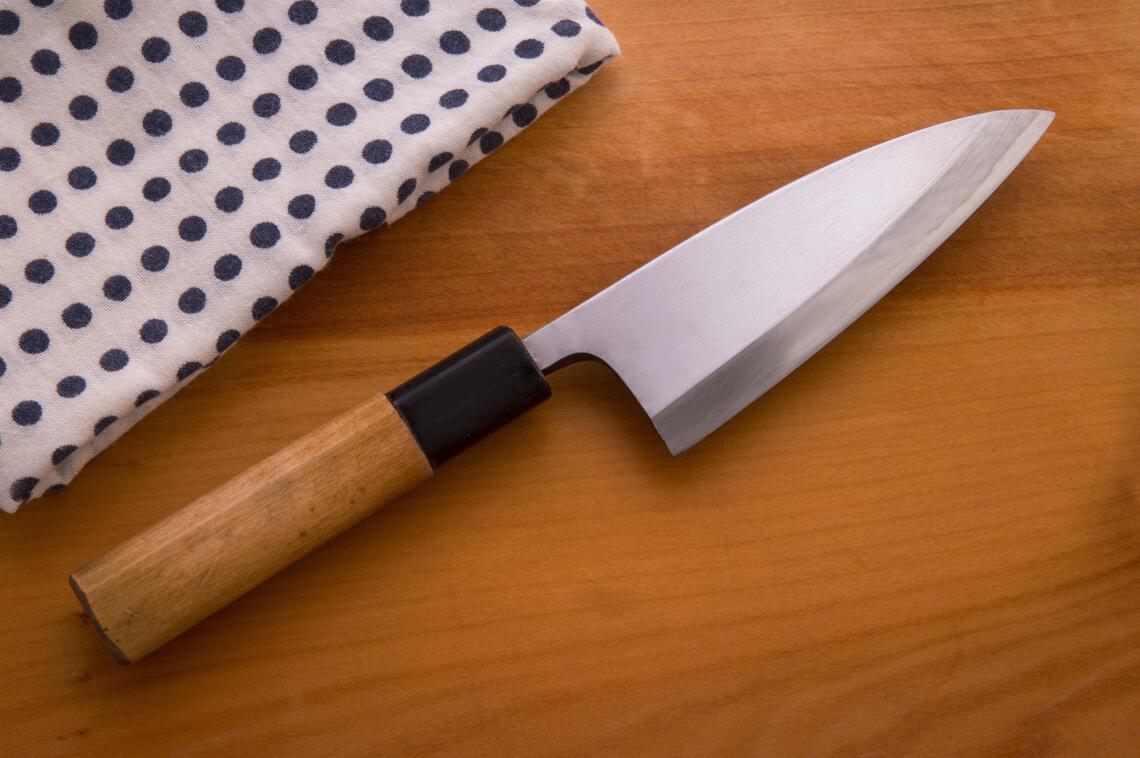
The Deba Bocho has both a round blade and spine which make it stand out among other Japanese knives. The spine is weighty and the blade is thicker than a Santoku or Nakiri. This enables Deba knives to remain undamaged while cutting hard fish bones, shells, and flesh. The primary application for these knives is indeed gutting and butchering seafood.
Deba Bocho knives come in several lengths for different sizes of fish that you may wish to prepare. Like the Usuba, the Deba has a single bevel edge. That said, there is a Western version of this knife called the Yo Deba with a double bevel.
Deba Knife: Characteristics and Use
Yanagiba
The Yanagiba Bocho is one of the fundamental knives in Japanese cooking. The blade has a much longer design than rest of the knives in this article. Usually measures around 240 to 300 mm, and the most popular model being 270 mm, apt for regular home cook’s needs to prepare fish for sushi.
The Yanagiba Bocho can be found with double or single bevel. Since they demand such harsh precision, the blade is usually made from high carbon steel like Shirogami and Aogami.
Yanagiba: The Essential Japanese Sushi Knife
Takohiki
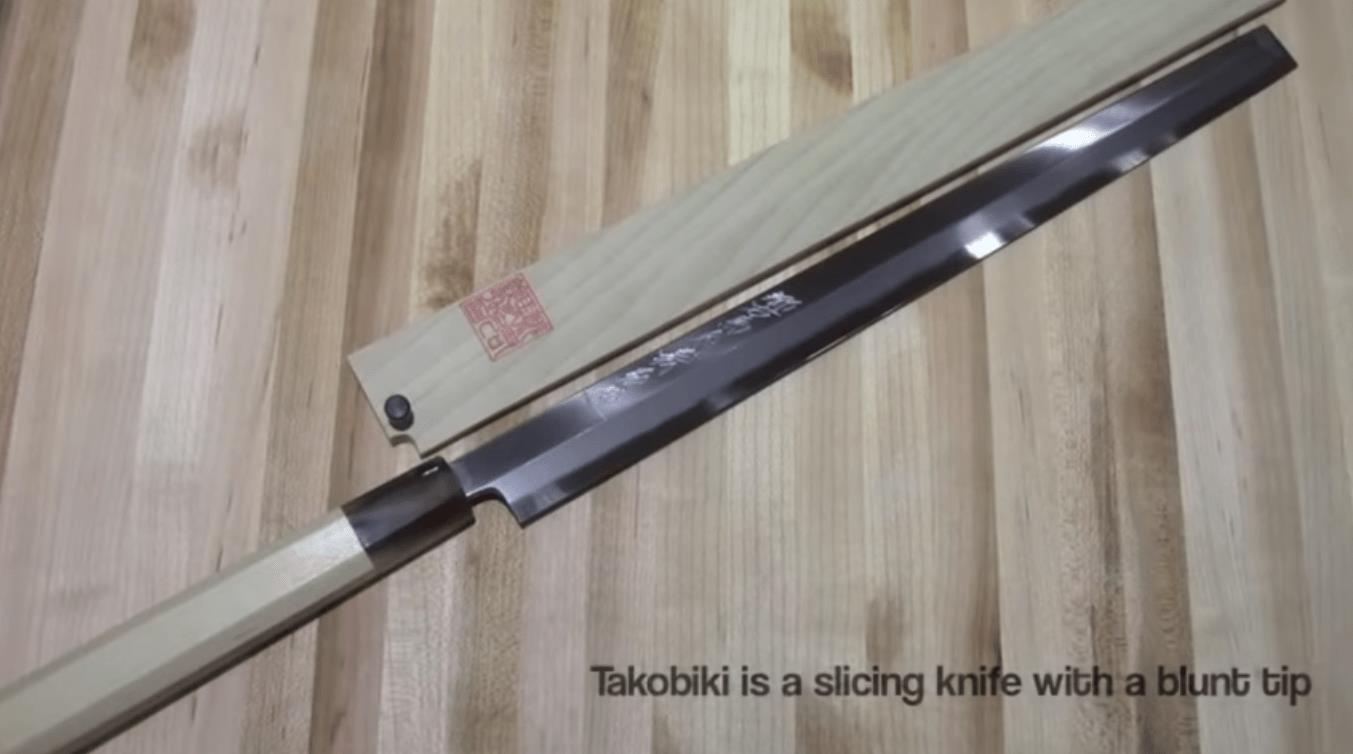
Takohiki translates to “Octopus Pull” in English. It is closely related to the Yanagiba and Sujihiki slicer knives. The Takohiki’s birthplace is the Kanto region near Tokyo in Japan and its purpose is to slice sashimi ― hence it is also called a sashimi knife. It has a long, narrow blade that is completely rectangular.
Takohiki knives come in varying lengths too, with blades being anywhere from 8 to 13 inches long. The flat tip is very handy for scraping pieces of fish off a chopping board and serving them to customers. The Takohiki is said to have this shape because the Japanese considered it impolite to point a sharp knife towards customers (and they still do).
Specialized Japanese knives
Petty
The Petty knife is essentially a Japanese paring knife. The name derives from the French word “Petit” (meaning small), and this knife certainly lives up to that title. The Petty is best suited to cutting small food items including pieces of fruit or vegetables since it gives you a high level of accuracy that a Santoku or Gyuto cannot achieve.
You can find Petty knives with blades as short as 3 inches and as long as 7 inches.
Petty Knife: The Petite Gyuto
Nakiri
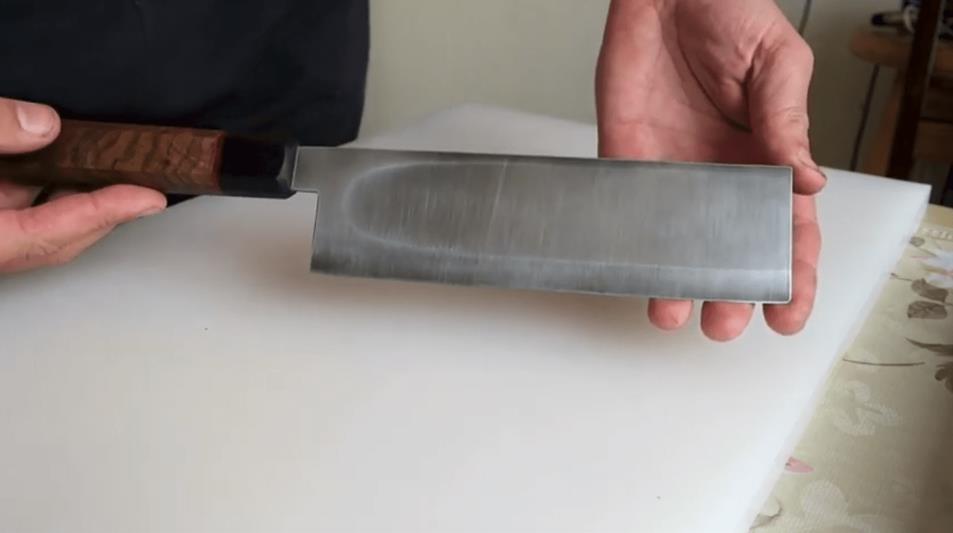
The Nakiri is a double-beveled knife with a rectangular blade that is perfect for chopping vegetables. It looks very similar to traditional Chinese Chef knives and Western meat cleavers. This usually has a round wooden handle, plus its blade tip is slightly rounded.
What Is a Nakiri Knife: The Only Veggie Slicer You Need
Usuba
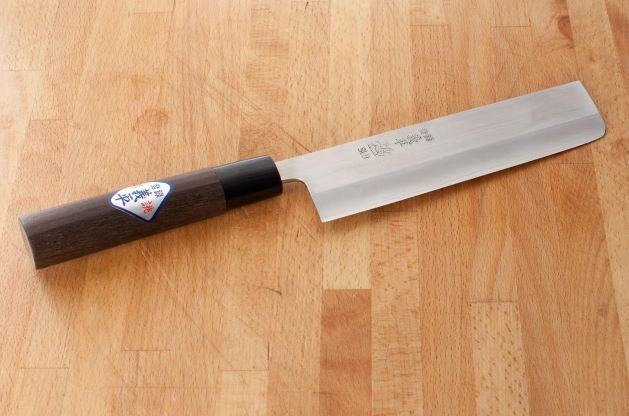
Strictly speaking, the Usuba is the same type of knife as the Nakiri. It too is very adept at chopping and dicing fruit and vegetables. The distinction is that Usuba blades have a single bevel, so they can be a lot sharper than a Nakiri. This is useful for experienced cooks who wish to make precise and thin cuts, but novices may struggle to maintain the small angle of the blade.
The blade of the Usuba (and Nakiri) is thinner than that of a Santoku or Gyuto, so slicing through very tough cuts of meat with this knife risks snapping it.
Honesuki
Usuba vs Nakiri: A Japanese Knife Showdown
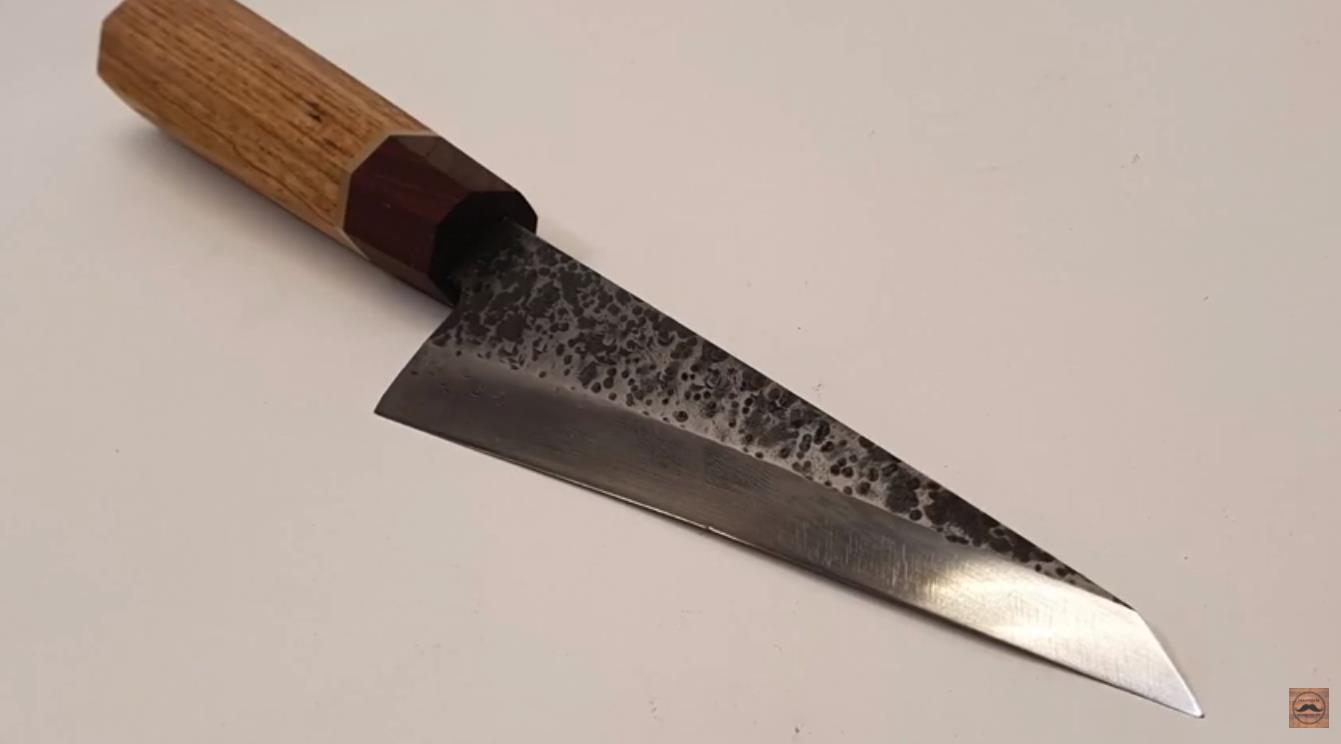
This knife’s main purpose is boning. It has a noticeably triangular blade shape and a small size. The Honesuki tends to be very stiff, so it can cut through flesh and cartilage of poultry and other types of meat without much trouble. Remember that the Honesuki is good at deboning, but not for actually slicing through bones.
Honesuki knives can have single or double bevel edges.
Everything about the Japanese Honesuki
Sujihiki
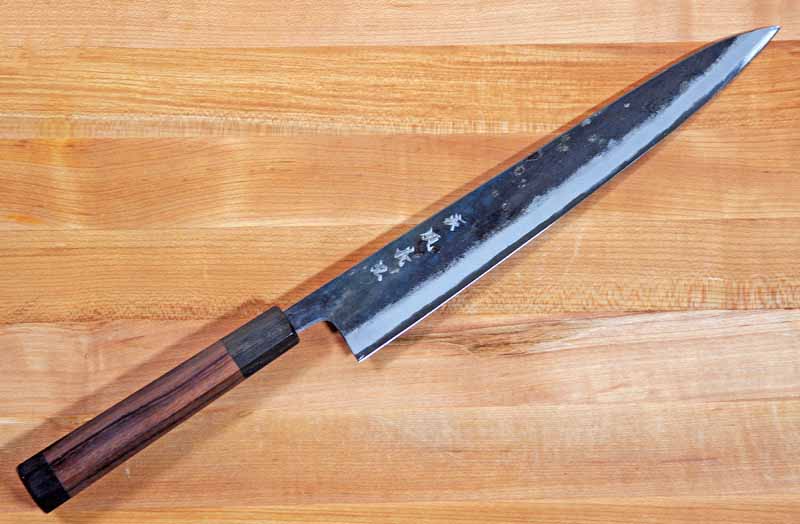
This is very much like a Western slicer knife. A Sujihiki has a long and thin blade that lends itself to cutting thin slices of cooked meat and fish, or for cutting off layers of fat. The blade alone can range from 9 to 12 inches in length.
Sujihiki: The Japanese Slicer
The Sujihiki is based on an older Japanese slicer design called a Yanagiba. The Yanagiba has a single bevel for precision cutting, so is especially useful when preparing sushi.
Sujihiki vs. Yanagiba: Which One Is Better for You?
Pankiri

A Pankiri is the closest Japanese equivalent to a bread knife. As such, it has a serrated edge whose sharp points can pierce the top layer of hard bread or soft cakes. As you slide the knife back and forth, the serrated blade quickly breaks down the lower layers of the food to leave you with a very clean slice of bread or cake.
The Pankiri is not the most precise Japanese blade, though it is the best tool for slicing baked goods. The blade of the Pankiri is most often 8-10 inches long.
Pankiri Knife: Parts, Features, and Uses
Hankotsu
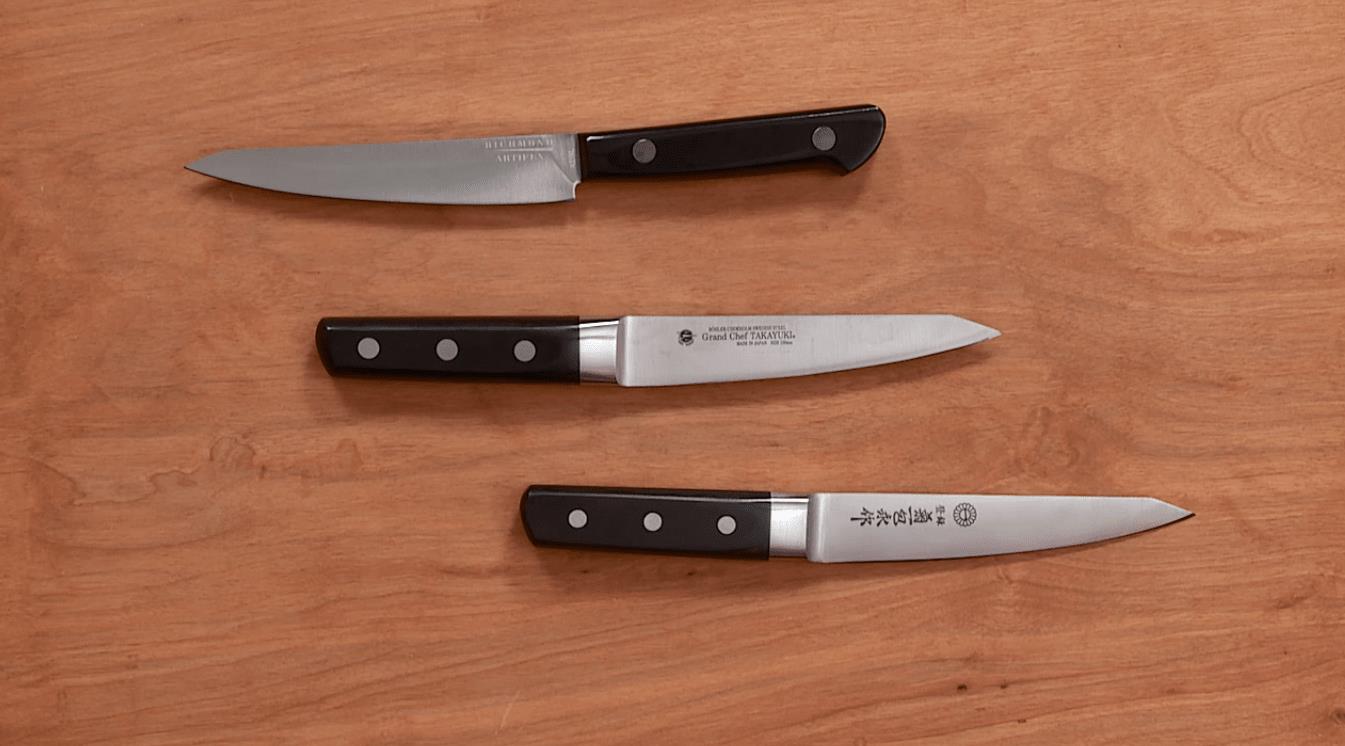
This is another kind of Japanese boning knife. While Western boning knives have a very eye-catching curvy blade that is flexible, the Hankotsu is comparatively straight and sturdy with a minor curve in the blade. The easiest way to cut with this knife is by suspending the piece of fish or meat and then stabbing with the Hankotsu point facing downwards.
While doing so, it is recommended to press the bottom of the handle with your thumb to prevent your hand from slipping and being dangerously cut by the Hankotsu’s edge. The bottom portion of the edge is sometimes made dull on purpose to reduce this risk.
The Hankotsu must be expertly designed to be thin enough to make delicate cuts around small bones, but not so thin as to weaken the blade.
Menkiri
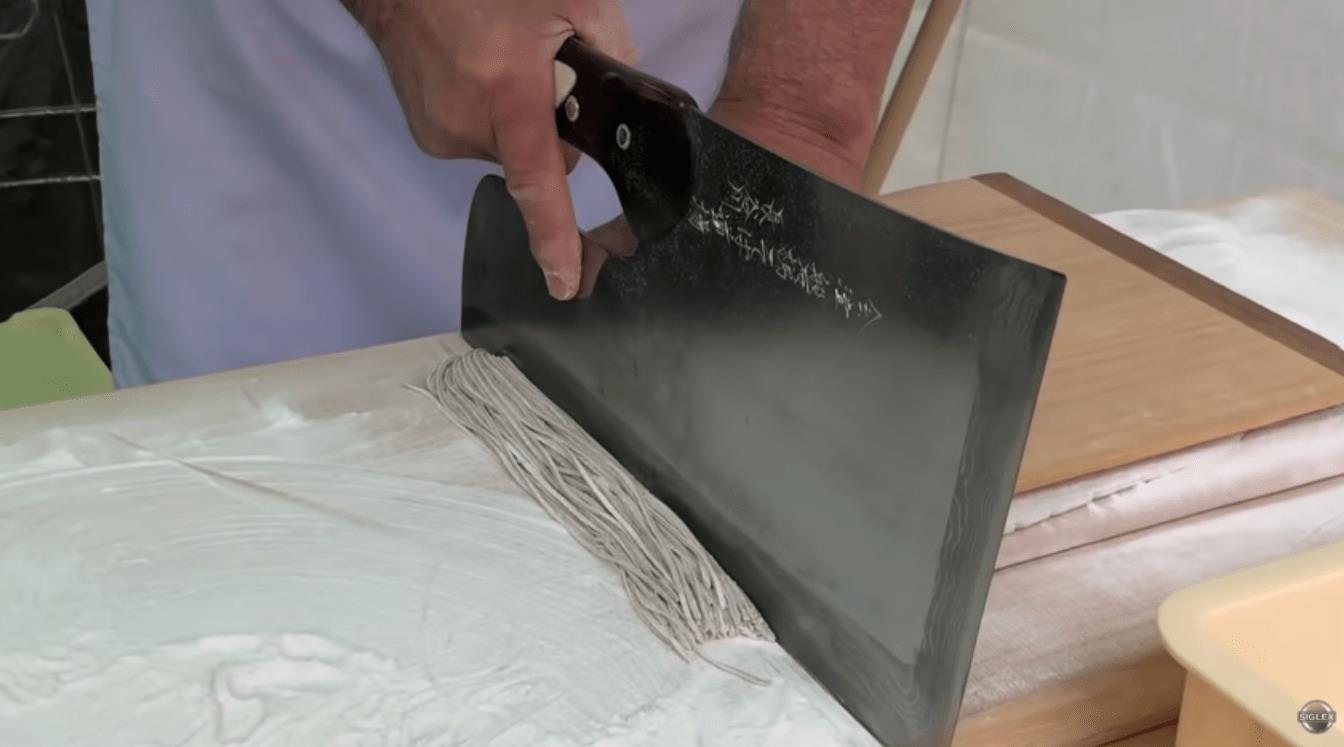
Of all the knives on this list, the Menkiri is surely the choice with the strangest shape. This is a heavy tool whose blade is a lot like that of a Nakiri (vegetable knife). Rather than the handle protruding out from the blade, the handle is connected to the blade from above. There is a gap between the blade and handle for your fingers.
The result is that the Menkiri device has a unique U knife shape. The design combined with the weight of the knife allows cooks to push down hard on whatever foods they are cutting. The name Menkiri is “Noodle Cutter” in English ― the edge of the Menkiri’s blade is completely flat which is necessary for cutting dough into thin noodles.
Why are Japanese knives expensive?
Even though you can purchase many good-quality Japanese knives in the $100-200 price range, you may be shocked to see some occasionally on sale for over $1000.
You might then ask: How could a simple knife cost so much? The answer is simple. Producing knives of that quality takes a lot of time, effort, and expertise, not to mention the high-end materials used in the handle. Unlike mass-produced blades, the best Japanese knives take weeks to produce and each one is hand-crafted by a few expert blacksmiths.
To become such a skilled craftsman requires years of practice. In essence, these knife makers are artists who work in tough conditions, and their very expensive knives are pieces of art. The high price tag of a Japanese knife is equivalent to that of a fine painting. If properly cared for, a handmade Japanese knife will serve you for decades.
How should you select a Japanese kitchen knife?
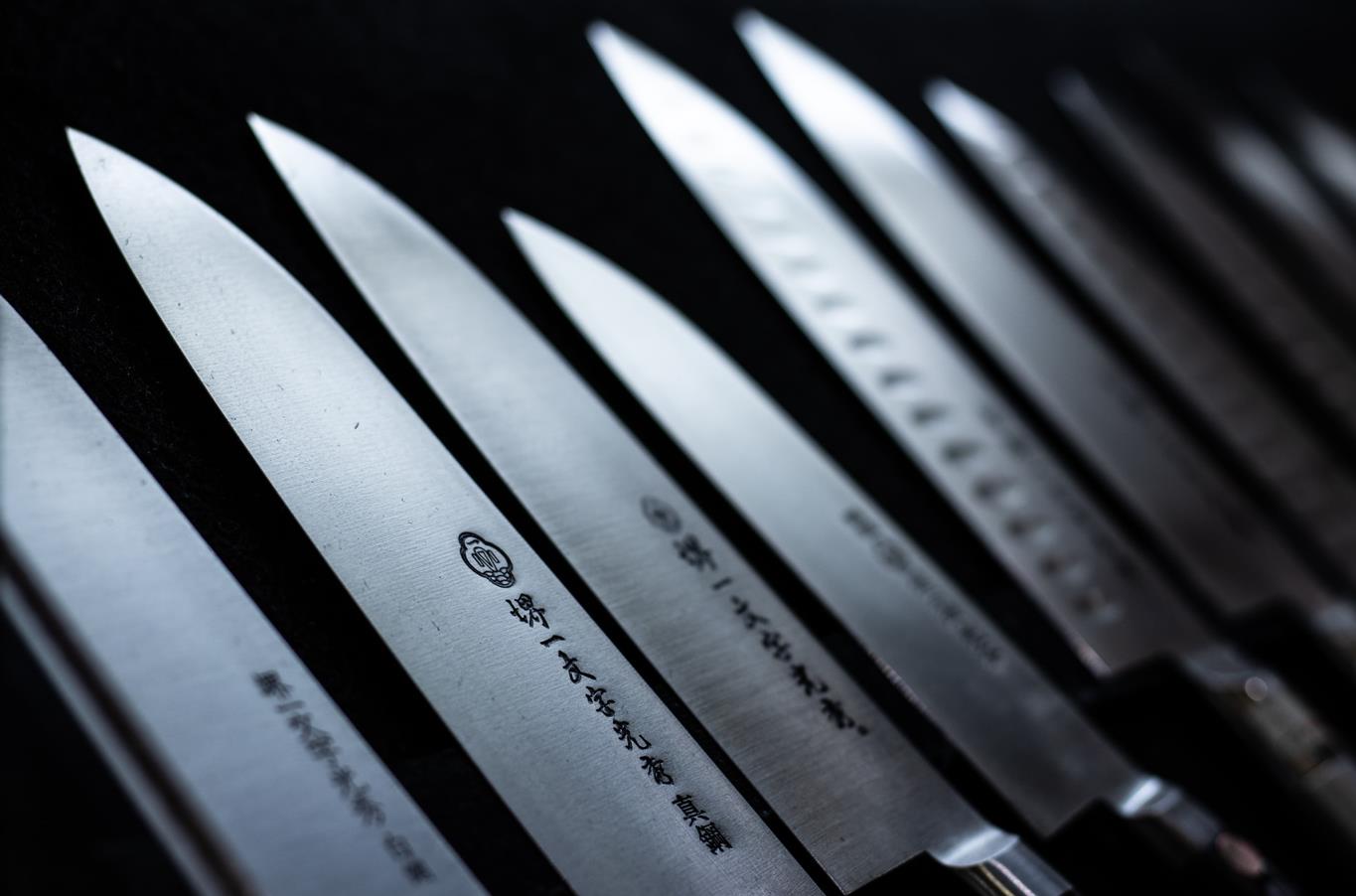
With so many fantastically designed Japanese knives to choose from, it is easy to feel overwhelmed as a beginner cook. This challenge is made even tougher if you have a strict budget. If you care for it, your Japanese kitchen knife will serve you well for many years by making your cooking experience more enjoyable. For this reason, a good-quality Japanese kitchen knife is a worthwhile investment.
Unless you are familiar with a particular knife style, it is unwise to purchase any knife online before holding it first. Even if a knife is of the finest quality, if it doesn’t fit your hand or cooking style, it is of little use to you personally. When selecting your Japanese knife, there are a few questions you should ask yourself:
What will I use it for?
Are you a professional or home cook who prepares mainly Japanese dishes? If so, you may want to build a knife collection around chopping fish and vegetables. Depending on what type of fish you prepare, you could consider buying specialized tools for boning and slicing.
If you cook Japanese dishes occasionally (or never), you can still benefit from a solid Japanese knife. Your best option, in that case, might be a versatile Santoku or Gyuto knife.
Does it fit me?
This question has a few parts. Firstly, the handle should feel comfortable when you grip it. Japanese knife handles are available in numerous shapes and materials, so you should find one you enjoy holding. It is also crucial to consider the weight and center of gravity of the knife ― these features impact the motion of the knife and therefore your ability to cook with it.
You need to find a knife whose blade is not too long based on the size of your hands. People with very large hands might have trouble using a small Petty or Hankotsu. Likewise, the long blade of a Sujihiki or Yanagiba may prove tricky for chefs with small hands.
Do I like the material and appearance?
Here is where the choice is personal. Looks are not everything, but it is a bonus if you find your Japanese knife beautiful. The material, shape, colors, and handle can combine to form a visually pleasing knife.
When it comes to the material, you can normally choose between ceramic, stainless steel, or carbon steel. You have to decide whether a ceramic or harder steel is worth the risk of potentially cracking the blade. If you opt for a stainless steel blade, you will need to sharpen it more often.
Conclusion
Despite their separate histories and manufacturing methods, many Japanese and Western knives are still similar. The style you pick is a matter of preference.
The selection of Japanese knives on offer will meet the needs of everyone from amateur cooks to globally-renowned chefs. You can buy each Japanese knife variety at a range of prices, but remember to only buy the knives necessary for your cooking.
Some designs such as the Takohiki or Menkiri are only useful for very specific applications i.e. cutting certain types of noodles or fish. These and other specialized knives are mainly useful to skilled chefs who focus on Japanese cuisine. For most others, buying lots of Japanese knives will not be worth the money.
Less is more. As a beginner cook, it is a bad idea to complicate already challenging cooking tasks. Your best option is to buy one high-quality, all-round Japanese Santoku or Gyuto and learn to use it effectively. You can add to your collection later if your dishes require more specific tools.
Check out our website if you’d like to upgrade your cutlery collection!









